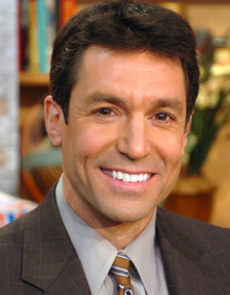By DAVID SHAYWITZ, MD
 As we anticipate a new year characterized by unprecedented interest in healthcare innovation, pay particular attention to the following three emerging tensions in the space.
As we anticipate a new year characterized by unprecedented interest in healthcare innovation, pay particular attention to the following three emerging tensions in the space.
Tension 1: Preventive Health vs Excessive Medicalization
A core tenet of medicine is that it’s better to prevent a disease (or at least catch it early) than to treat it after it has firmly taken hold. This is the rationale for both our interest in screening exams (such as mammography) as well as the focus on risk factor reduction (e.g. treating high blood pressure and high cholesterol to prevent heart attacks).
The problem, however, is that intervention itself carries a risk, which is sometimes well-characterized (e.g. in the case of a low-dose aspirin for some patients with a history of heart disease) but more often incompletely understood.
As both Eric Topol and Nassim Taleb have argued, there’s a powerful tendency to underestimate the risk associated with interventions. Topol, for example, has highlighted the potential risk of using statins to treat patients who have never had heart disease (i.e. primary prevention), a danger he worries may exceed the “relatively small benefit that can be derived.” (Other cardiologists disagree – see this piece by colleague Matt Herper).
In his new book Antifragile, Taleb focuses extensively on iatrogenics, arguing “we should not take risks with near-healthy people” though he adds “we should take a lot, a lot more, with those deemed in danger.”
Both Topol and Taleb are right that we tend to underestimate iatrogenicity in general, and often fail to factor in the small but real possibility of potential harm.
At the same time, I also worry about external experts deciding categorically what sort of risk is or isn’t “worth it” for an individual patient – a particular problem in oncology, where it now seems fashionable to declare the possibility of a few more months of life a marginal or insignificant benefit.
Even less dramatically, a treatment benefit that some might view as trivial (for hemorrhoids, say) might be life-altering for others. For these sufferers, a theoretical risk that some (like Taleb) find prohibitive might be worth the likelihood of symptom relief. Ideally, this decision would ultimately belong to patients, not experts asserting to act on patients’ behalf.
Continue reading…


 As we anticipate a new year characterized by unprecedented interest in healthcare innovation, pay particular attention to the following three emerging tensions in the space.
As we anticipate a new year characterized by unprecedented interest in healthcare innovation, pay particular attention to the following three emerging tensions in the space. Gun rights advocates are correct: a well armed principal might have reduced the death toll from the tragic elementary school shootings in
Gun rights advocates are correct: a well armed principal might have reduced the death toll from the tragic elementary school shootings in  Few diseases invoke more fear in patients and families than dementia (e.g., Alzheimer’s Disease (AD), progressive multiple sclerosis, Pick’s Disease). Surveys have shown the fear of dementia—especially AD—far outweighs concerns of a diagnosis of cancer, stroke, or cardiovascular disease.
Few diseases invoke more fear in patients and families than dementia (e.g., Alzheimer’s Disease (AD), progressive multiple sclerosis, Pick’s Disease). Surveys have shown the fear of dementia—especially AD—far outweighs concerns of a diagnosis of cancer, stroke, or cardiovascular disease.








